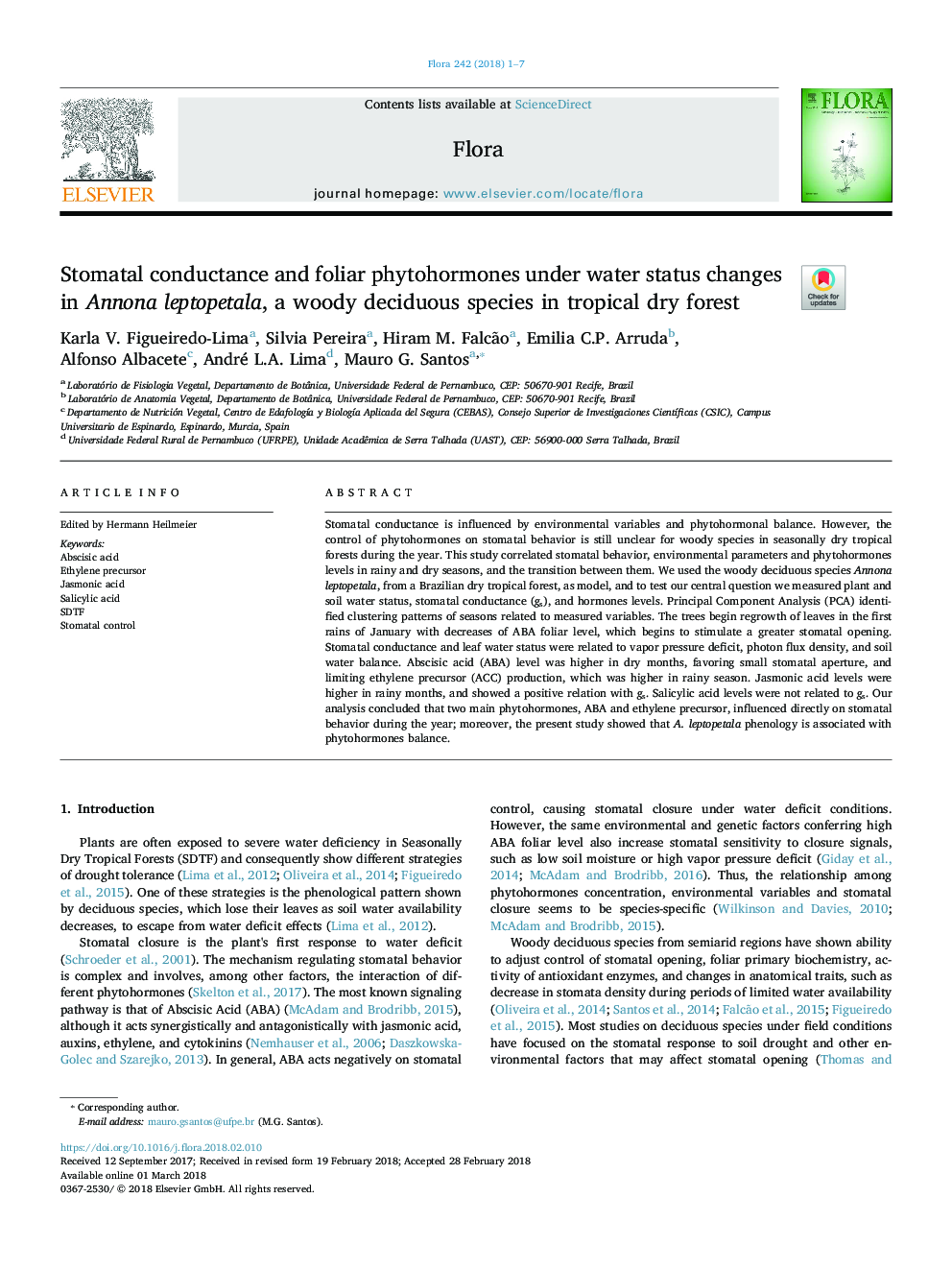| Article ID | Journal | Published Year | Pages | File Type |
|---|---|---|---|---|
| 8470148 | Flora - Morphology, Distribution, Functional Ecology of Plants | 2018 | 7 Pages |
Abstract
Stomatal conductance is influenced by environmental variables and phytohormonal balance. However, the control of phytohormones on stomatal behavior is still unclear for woody species in seasonally dry tropical forests during the year. This study correlated stomatal behavior, environmental parameters and phytohormones levels in rainy and dry seasons, and the transition between them. We used the woody deciduous species Annona leptopetala, from a Brazilian dry tropical forest, as model, and to test our central question we measured plant and soil water status, stomatal conductance (gs), and hormones levels. Principal Component Analysis (PCA) identified clustering patterns of seasons related to measured variables. The trees begin regrowth of leaves in the first rains of January with decreases of ABA foliar level, which begins to stimulate a greater stomatal opening. Stomatal conductance and leaf water status were related to vapor pressure deficit, photon flux density, and soil water balance. Abscisic acid (ABA) level was higher in dry months, favoring small stomatal aperture, and limiting ethylene precursor (ACC) production, which was higher in rainy season. Jasmonic acid levels were higher in rainy months, and showed a positive relation with gs. Salicylic acid levels were not related to gs. Our analysis concluded that two main phytohormones, ABA and ethylene precursor, influenced directly on stomatal behavior during the year; moreover, the present study showed that A. leptopetala phenology is associated with phytohormones balance.
Related Topics
Life Sciences
Agricultural and Biological Sciences
Ecology, Evolution, Behavior and Systematics
Authors
Karla V. Figueiredo-Lima, Silvia Pereira, Hiram M. Falcão, Emilia C.P. Arruda, Alfonso Albacete, André L.A. Lima, Mauro G. Santos,
